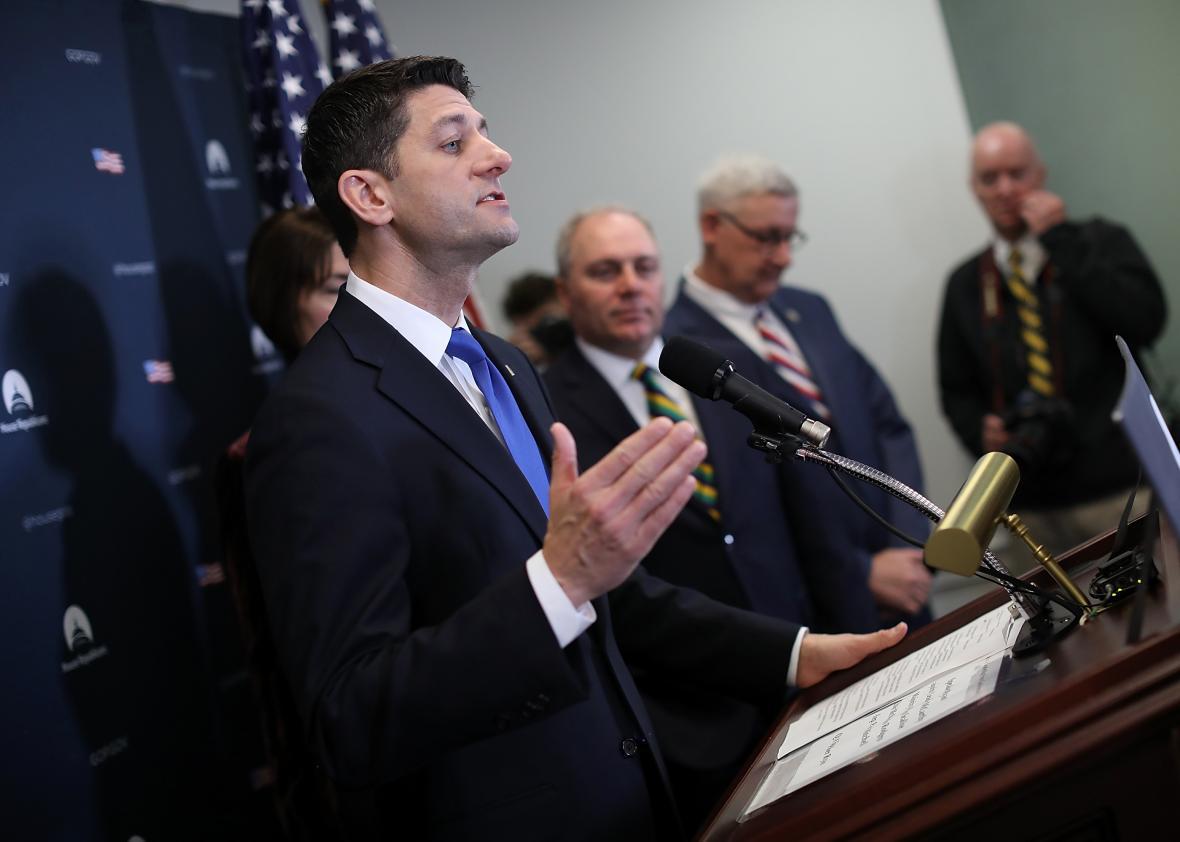The Republican plan to replace Obamacare is still very much a work in progress. But when an early draft of the legislation leaked to the press last week, it was immediately obvious that the blueprint conservatives had in mind would deal a blow to needy families, not just by cutting their aid, but by changing how the government doles out insurance subsidies.
Under the Affordable Care Act, Washington helps households pay their health premiums with tax credits that are more generous for lower-income households. The Republican plan would take a different approach by offering tax credits that simply rise in value with age, ranging from $2,000 for a twentysomething to $4,000 for those over 60.
It doesn’t take a lot of calculation to figure out that many youngish, lower-middle-class Americans would lose out in that bargain. But thankfully, someone has done the math for us anyway. According to an analysis this week from the Kaiser Family Foundation, a 27-year-old earning $20,000 would lose $1,225 worth of premium subsidies. A 40-year-old making the same would forgo about $1,100, while a 60-year-old would be out $6,000. (Obamacare’s premiums aren’t technically based on age, but because they cap premiums as a percentage of income, they’re more valuable for people who’d otherwise pay a lot for coverage, like the old.) None of this even includes the lost value of Obamacare’s cost-sharing reductions, which limit out-of-pocket costs for lower-earning enrollees.
As the graph shows, there are winners here, too. While Obamacare’s subsidies are only available to Americans who make less than 400 percent of the poverty line, the Republican subsidies would be available to everybody in the individual market. So young and middle-age enrollees who get no or small subsidies today might end up getting more generous tax credits than they currently would.
That doesn’t necessarily mean the Republican plan would be a better deal for them overall. That depends on what happens to their premiums and out-of-pocket costs—and gaming out how those changes might balance is a bit complicated. By reducing the number of services insurers will be required to cover, the Republican plan would likely bring down premiums for people who want more bare-bones coverage, but they could end up on the hook should they ever get sick. People with pre-existing conditions would also be subject to continuous coverage rules, or be forced to pay a penalty. Meanwhile, the GOP plan would kill the rules that currently limit how much more insurers can charge older customers than younger ones, meaning that premiums could shoot up especially high for the elderly.
To add just one more wrinkle to all this, Obamacare also adjusts its subsidies based on the local cost of insurance, which tends to be more expensive in low-population areas than in cities. The GOP plan wouldn’t do that, meaning that people in rural Alabama are going to be hit a lot harder than, say, aspiring actors living in Los Angeles.
Take it altogether, and a sort of ironic picture unfolds. “The typical person who is going to lose the most in this scenario is a lower-income person in their 60s who lives in a rural area, where the person who gains is the affluent millennial urbanite,” Cynthia Cox, an analyst at the Kaiser Family Foundation, told me. In other words, the Republican plan doesn’t just screw the poor. It screws Trump voters in particular, while giving a hand to a lot of young people who probably voted for Hillary. Go figure.
